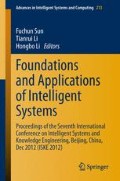Abstract
With the development of high-speed railway, its security guarantee has received more and more attention. The railway track state is safety-critical and affected by many factors. The proposed approach focuses on establishing a track-state prediction model by monitoring data and analyzing the deformation trends in track geometric dimensions. Radial basis function (RBF) neural network is widely used in many industrial prediction domains, and principal component analysis (PCA) is a kind of methods to reduce dimensions. In this paper, we present an approach for predicting track irregularity index using PCA-RBF model. It is benefit for periodical maintenance of railway systems and safeguarding of transportation. The experiments show that the proposed model is effective.
Access this chapter
Tax calculation will be finalised at checkout
Purchases are for personal use only
References
Luo L, Zhang G, Wu W (2006) Control of the track irregularity in the wheel-rail system. China Railway Publishing House, Beijing
Akpinar B, Glal E (2012) Multisensor railway track geometry surveying system. IEEE Trans Instrum Meas 61(1):190–197
Yoshihiko S (2001) New track mechanics. China Railway Publishing House, Beijing
Huang Y (2009) Study on prediction method for railway track irregularity. Master Dissertation, Beijing Jiaotong University
Chang H, Liu R, Wang W (2010) Multistage linear prediction model of track quality index. In: Proceeding the conference on traffic and transportation studies. ICTTS, Kunming, pp 1183–1192
Qu J, Gao L, Xin T (2010) Track irregularity development prediction method based on Grey-Markov chain model. J Beijing Jiaotong Univ 34(4):107–111
Gao J (2011) Track irregularity development prediction research based on state transition probability matrix. Railway Constr 7:140–143
Moody J, Darken CJ (1989) Fast learning in networks of locally-tuned processing units. Neural Comput, pp 281–294
Liu Y, Huang D, Li Y (2011) Adaptive statistic process monitoring with a modified PCA. In: Proceedings IEEE international conference on computer science and automation engineering (CSAE2011). IEEE Press, Shanghai, pp 713–716
Chen D, Tian X (2008) Detection technology development of the China’s high-speed railway track. Railway Constr 12:82–86
Sing JK, Thakur S, Basu DK, Nasipuri M (2008) Direct kernel PCA with RBF neural networks for face recognition. In: Proceedings IEEE region 10 annual international conference. IEEE Press, Hyderabad, pp 1–6
Salahshoor K, Kordestani M, Khoshro MS (2009) Design of online soft sensors based on combined adaptive PCA and RBF neural networks. In: Proceedings IEEE symposium on computational intelligence in control and automation (CICA2009). IEEE Press, Nashville, TN, pp 89–95
Wei H, Amari S (2007) Eigenvalue analysis on singularity in RBF networks. In: Proceedings IEEE international conference on neural networks. IEEE Press, Orlando, FL, pp 690–695
Xu P, Sun Q, Liu R, Wang F (2011) A short-range prediction model for track quality index. Proc Inst Mech Eng, Part F: J Rail Rapid Transit 225(3):277–285
Acknowledgments
This work is supported by the National Science Foundation of China (Nos. 61134002 and 61170111), the Science and Technology Research Funds of the Ministry of Railways (2010G006-D), and Research Funds of Traction Power State Key Laboratory of Southwest Jiaotong University (2012TPL_T15)
Author information
Authors and Affiliations
Corresponding author
Editor information
Editors and Affiliations
Rights and permissions
Copyright information
© 2014 Springer-Verlag Berlin Heidelberg
About this paper
Cite this paper
Yang, Y., Lu, X., Dai, Q., Wang, H. (2014). Prediction Analysis of the Railway Track State Based on PCA-RBF Neural Network. In: Sun, F., Li, T., Li, H. (eds) Foundations and Applications of Intelligent Systems. Advances in Intelligent Systems and Computing, vol 213. Springer, Berlin, Heidelberg. https://doi.org/10.1007/978-3-642-37829-4_9
Download citation
DOI: https://doi.org/10.1007/978-3-642-37829-4_9
Published:
Publisher Name: Springer, Berlin, Heidelberg
Print ISBN: 978-3-642-37828-7
Online ISBN: 978-3-642-37829-4
eBook Packages: EngineeringEngineering (R0)

